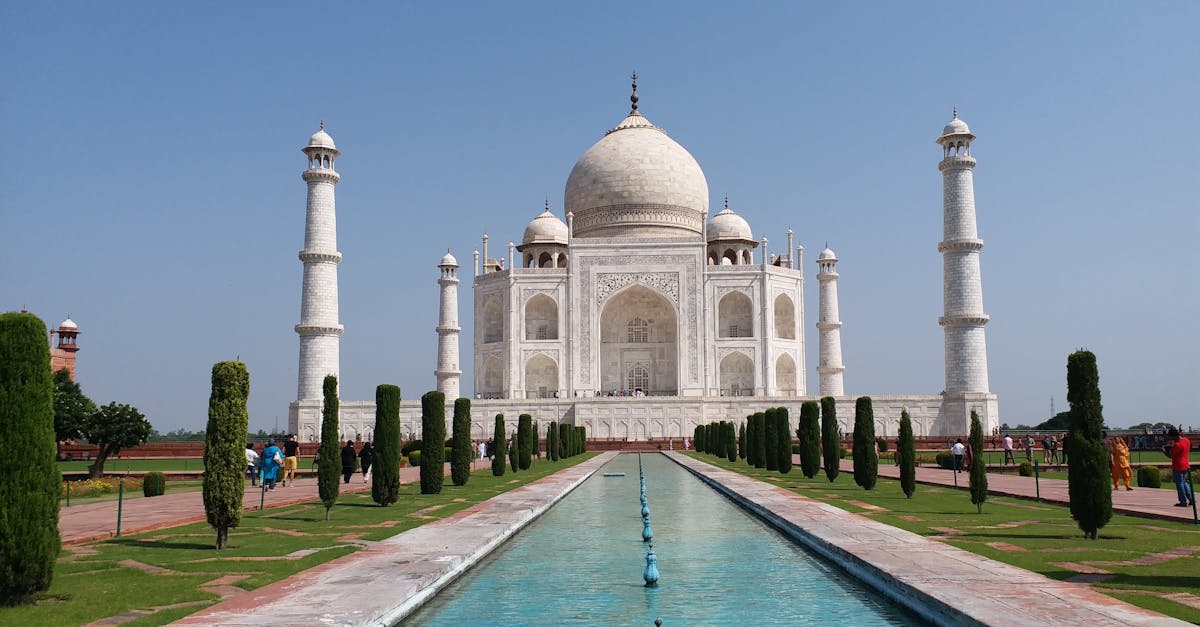India is a land of rich heritage and history, filled with ancient monuments and architectural wonders that tell the story of its past. From magnificent forts to stunning temples, each historical site offers a glimpse into the cultural fabric of the country. This article explores the top 10 historical places in India that every history buff and traveler should visit.
| Rank | Historical Place | Location | Significance |
|---|---|---|---|
| 1 | Taj Mahal | Agra, Uttar Pradesh | Symbol of Love |
| 2 | Qutub Minar | Delhi | World’s Tallest Brick Minaret |
| 3 | Jaipur City (Pink City) | Rajasthan | Cultural Heritage |
| 4 | Hampi | Karnataka | Vijayanagara Empire Ruins |
| 5 | Ajanta and Ellora Caves | Maharashtra | Rock-Cut Temples |
| 6 | Red Fort | Delhi | Icon of Mughal Architecture |
| 7 | Gateway of India | Mumbai, Maharashtra | Historical Monument |
| 8 | Khajuraho Temples | Madhya Pradesh | Erotic Sculptures |
| 9 | Jaisalmer Fort | Rajasthan | Living Fort |
| 10 | Mahabalipuram | Tamil Nadu | Monolithic Temples |
Taj Mahal
The Taj Mahal, an epitome of love and beauty, was commissioned by Emperor Shah Jahan in memory of his beloved wife Mumtaz Mahal. This UNESCO World Heritage site, known for its stunning white marble architecture, attracts millions of tourists every year. Its intricate carvings and symmetrical gardens make it one of the most photographed monuments in the world.

Qutub Minar
Qutub Minar is a towering structure in Delhi, standing at a height of 73 meters, making it the tallest brick minaret in the world. Built in the 12th century, it showcases exquisite Indo-Islamic architecture. The surrounding Qutub complex also features several other historical monuments, making it a significant archaeological site.

Jaipur City (Pink City)
Jaipur, known as the Pink City due to its distinctively colored buildings, is a UNESCO World Heritage site. The city is famous for its majestic forts and palaces, including the Hawa Mahal and the Amber Fort. Jaipur’s architecture reflects the grandeur of Rajputana culture, making it a must-visit destination for history enthusiasts.

Hampi
Hampi, once the capital of the Vijayanagara Empire, is famous for its ruins that date back to the 14th century. This UNESCO World Heritage site is adorned with temples, palaces, and marketplaces, showcasing the architectural brilliance of the time. The landscape is dotted with boulder-strewn hills, making it a unique and picturesque destination.

Ajanta and Ellora Caves
Located in Maharashtra, the Ajanta and Ellora Caves are renowned for their rock-cut architecture and intricate sculptures. These caves date back to the 2nd century BC and contain stunning Buddhist, Hindu, and Jain temples. The artwork and carvings inside the caves provide a fascinating insight into ancient Indian culture and religion.
Red Fort
The Red Fort in Delhi is a UNESCO World Heritage site and a symbol of India’s rich history. Built in the 17th century, this fort served as the main residence of the Mughal emperors for nearly 200 years. The fort’s massive red sandstone walls and beautiful gardens make it a striking example of Mughal architecture.
Gateway of India
The Gateway of India, located in Mumbai, is an iconic monument that commemorates the visit of King George V and Queen Mary in 1911. This archway, overlooking the Arabian Sea, has become a popular tourist attraction and a symbol of the city. The architectural style blends Hindu and Muslim influences, reflecting India’s diverse heritage.
Khajuraho Temples
Famous for their intricate erotic sculptures, the Khajuraho Temples in Madhya Pradesh are a UNESCO World Heritage site. Built between 950 and 1050 AD, these temples represent the zenith of medieval Indian architecture. The detailed carvings depict various aspects of life, including love and spirituality, making them a fascinating study of ancient Indian society.
Jaisalmer Fort
Jaisalmer Fort, also known as Sonar Quila, is one of the largest forts in the world and a UNESCO World Heritage site. Built in the 12th century, it is a living fort, with shops, hotels, and residences within its walls. The fort’s golden sandstone architecture blends seamlessly with the desert landscape, making it a stunning sight.
Mahabalipuram
Mahabalipuram, located in Tamil Nadu, is famous for its monolithic rock-cut temples and sculptures, dating back to the 7th century. This UNESCO World Heritage site includes the Shore Temple and the Pancha Rathas, which showcase the artistry and skill of ancient Indian craftsmen. The coastal location adds to the charm of this historical site.
FAQ
What is the significance of the Taj Mahal?
The Taj Mahal is not only a symbol of love but also an architectural marvel that reflects the grandeur of Mughal architecture. It represents the pinnacle of Indo-Islamic artistry and is a UNESCO World Heritage site, attracting millions of visitors annually.
Why is Jaipur known as the Pink City?
Jaipur is referred to as the Pink City because of the distinct pink hue of its buildings. This color was chosen to welcome the Prince of Wales in 1876 and has since become a hallmark of the city’s architecture.
What makes Hampi a UNESCO World Heritage site?
Hampi is recognized for its outstanding cultural landscape and the ruins of the Vijayanagara Empire, showcasing the architectural and artistic excellence of the time. The site is significant for its historical importance and intricate temple architecture.
References:
– [Archaeological Survey of India](http://asi.nic.in)
– [UNESCO World Heritage Centre](https://whc.unesco.org/en/list)
– [Ministry of Tourism, Government of India](https://tourism.gov.in)
